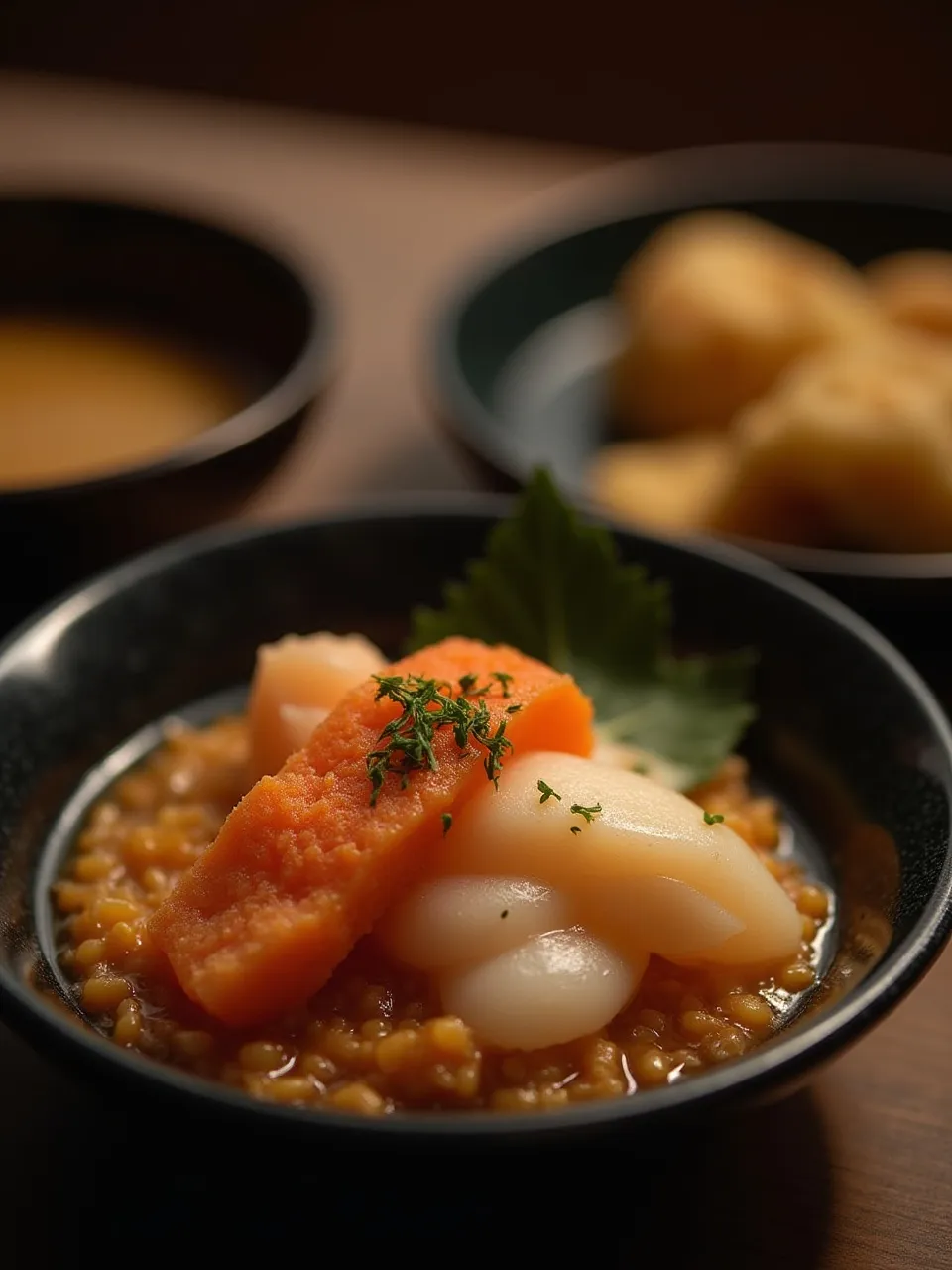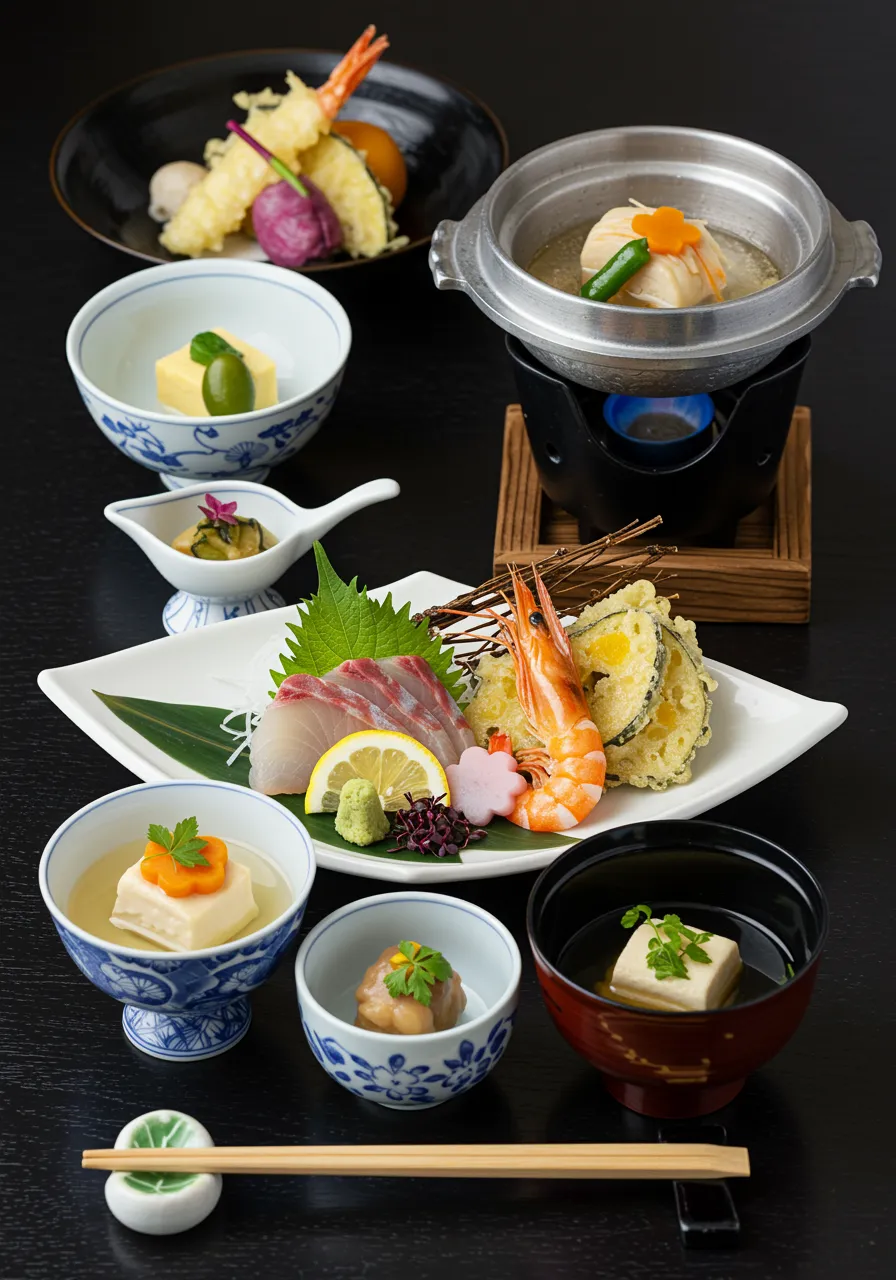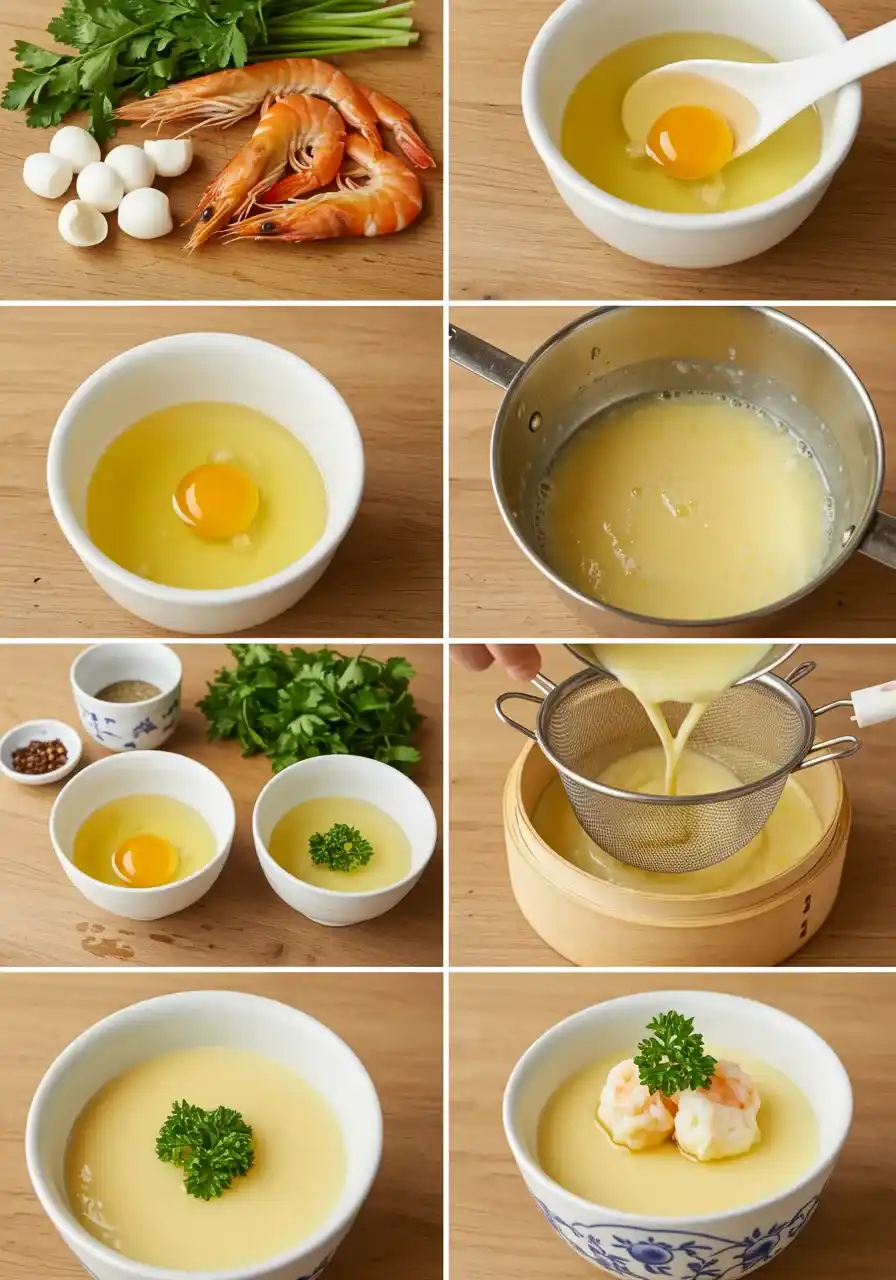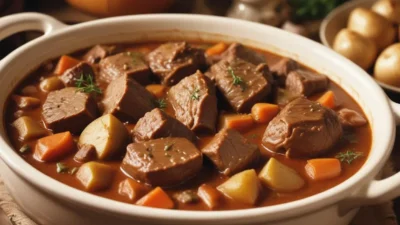Contents
Kaiseki ryori is a traditional Japanese multi-course meal that highlights seasonal ingredients and artistic presentation. This refined dining experience emphasizes harmony, balance, and the natural flavors of fresh, local foods. From delicate sashimi to comforting steamed egg custard (chawanmushi), each course invites you to savor Japanese culinary culture in its purest form.
Ingredients
- 2 eggs
- 1.5 cups dashi stock homemade or store-bought
- ½ tsp soy sauce
- ½ tsp mirin
- A pinch of salt
- 3-4 slices of mushroom
- 2 peeled shrimp
- A small piece of fish cake (kamaboko) optional
- Parsley or mitsuba for garnish
Instructions
- Gently beat the eggs without over-whisking.

- Mix the dashi, soy sauce, mirin, and salt together, then combine with the eggs. Stir gently.
- Strain the mixture through a fine sieve to achieve a smooth custard liquid.
- Place shrimp, mushrooms, and fish cake (if using) into small steaming cups or bowls.
- Carefully pour the egg mixture over the ingredients. Cover with foil or lids.
- Steam gently for about 15–20 minutes over low heat (avoid vigorous boiling).
- Garnish with parsley or mitsuba and serve warm.
Notes
Kaiseki ryori — a very different kind of Japanese dining 🍣
To be honest, I didn’t know what to expect the first time I sat down to a kaiseki meal. I’d heard the term tossed around in articles and travel blogs, usually next to words like “refined” or “elegant,” but those words don’t really capture what it’s like. It’s not just about eating. It’s... something else entirely. Kaiseki isn’t a single dish — it’s a series of small, carefully made plates, each one highlighting what’s fresh that season. Think of it as Japan’s version of a multi-course fine dining experience, but deeply tied to tradition and nature 🌿. Nothing feels rushed. Everything has meaning.
Some courses might be as simple as a slice of raw fish arranged just so, or a delicate broth with a single floating herb. Others are a bit more involved — grilled fish, a bit of tempura, a piece of tofu with a topping you’ve never heard of but suddenly love.
Kaiseki isn’t a single dish — it’s a series of small, carefully made plates, each one highlighting what’s fresh that season. Think of it as Japan’s version of a multi-course fine dining experience, but deeply tied to tradition and nature 🌿. Nothing feels rushed. Everything has meaning.
Some courses might be as simple as a slice of raw fish arranged just so, or a delicate broth with a single floating herb. Others are a bit more involved — grilled fish, a bit of tempura, a piece of tofu with a topping you’ve never heard of but suddenly love.Where you’ll find it 🍽️
If you’re in Japan, you’ll usually find Kaiseki meals at ryotei (fancy old-school restaurants), or ryokan, the traditional inns where dinner is often included in the stay. I had mine in Kyoto, where this style of cooking really took root historically. Some tea ceremonies also offer a smaller version of Kaiseki, since that’s where the idea originally started 🍵.There’s no fixed menu because it changes with the seasons — that’s kind of the whole point. But a typical Kaiseki meal might go something like this:
- A small starter to whet your appetite
- A selection of seasonal bites (sometimes on a little wooden tray that looks like a garden)
- A sashimi course
- A simmered dish (often veggies or tofu with a bit of fish or meat)
- A clear soup or something in a covered bowl
- Something grilled — fish is common
- A deep-fried item, like very light tempura
- Rice, miso soup, and pickles
- A light dessert, often fruit or jelly 🍡







Whoa, this looks amazing! That chawanmushi recipe at the end is tempting me – I might just have to try making that this weekend. The whole article makes kaiseki sound like an incredible experience, way beyond just a meal. Definitely adding this to my bucket list!